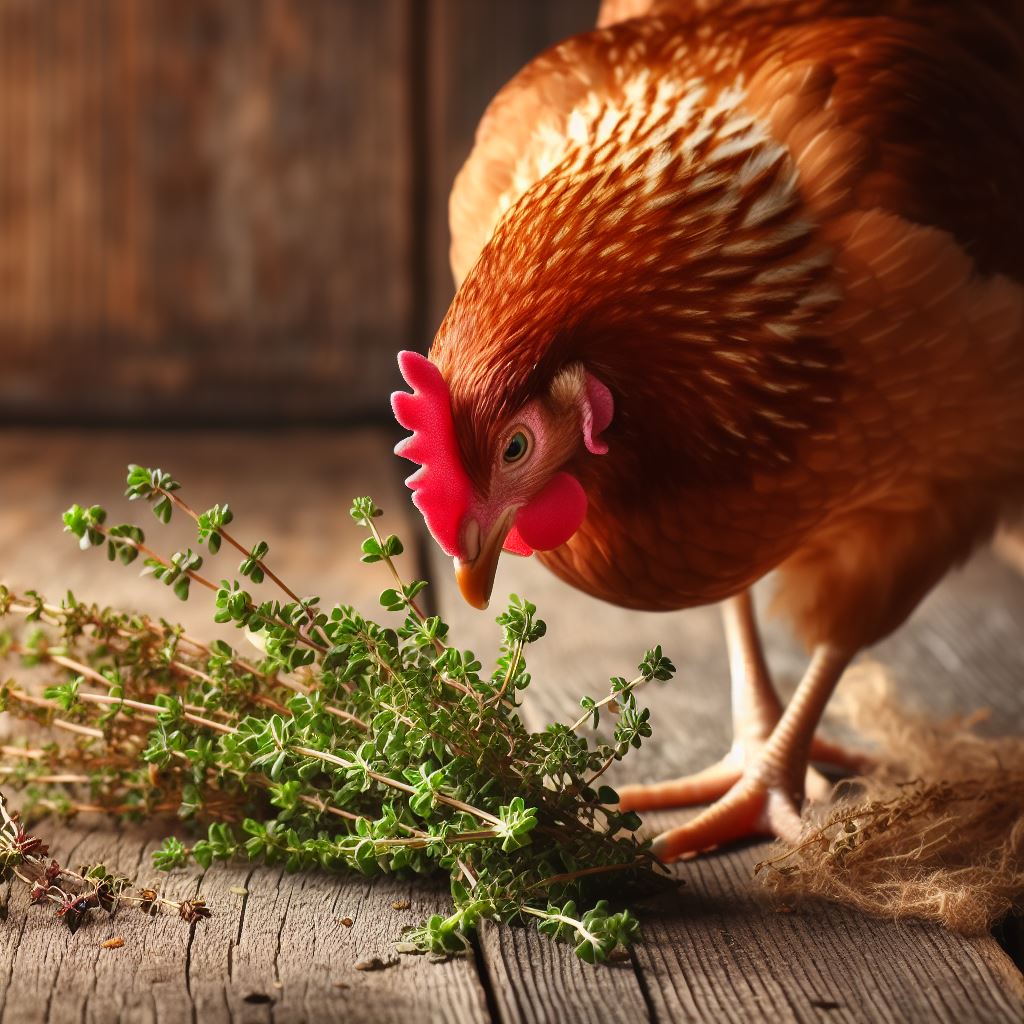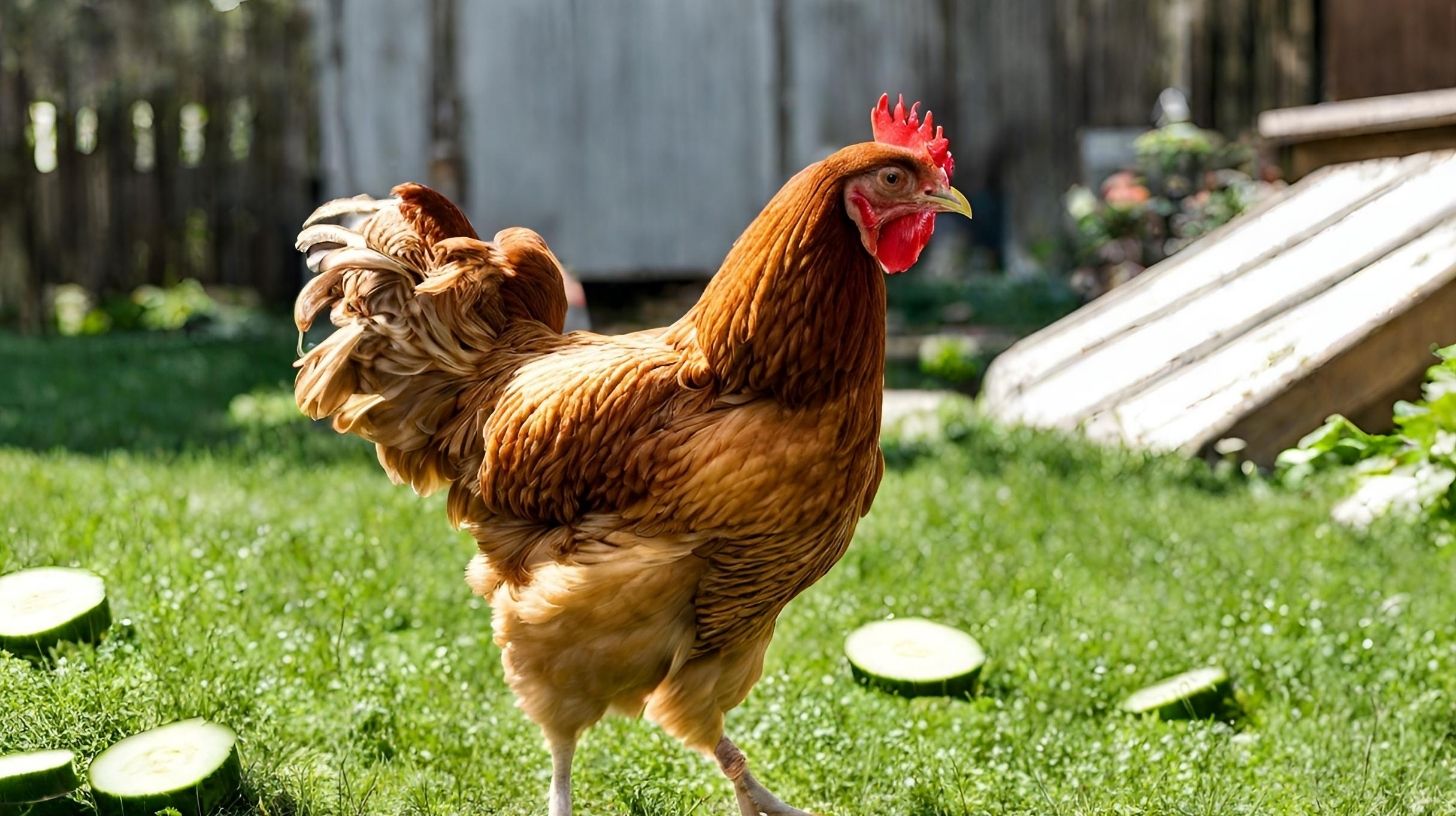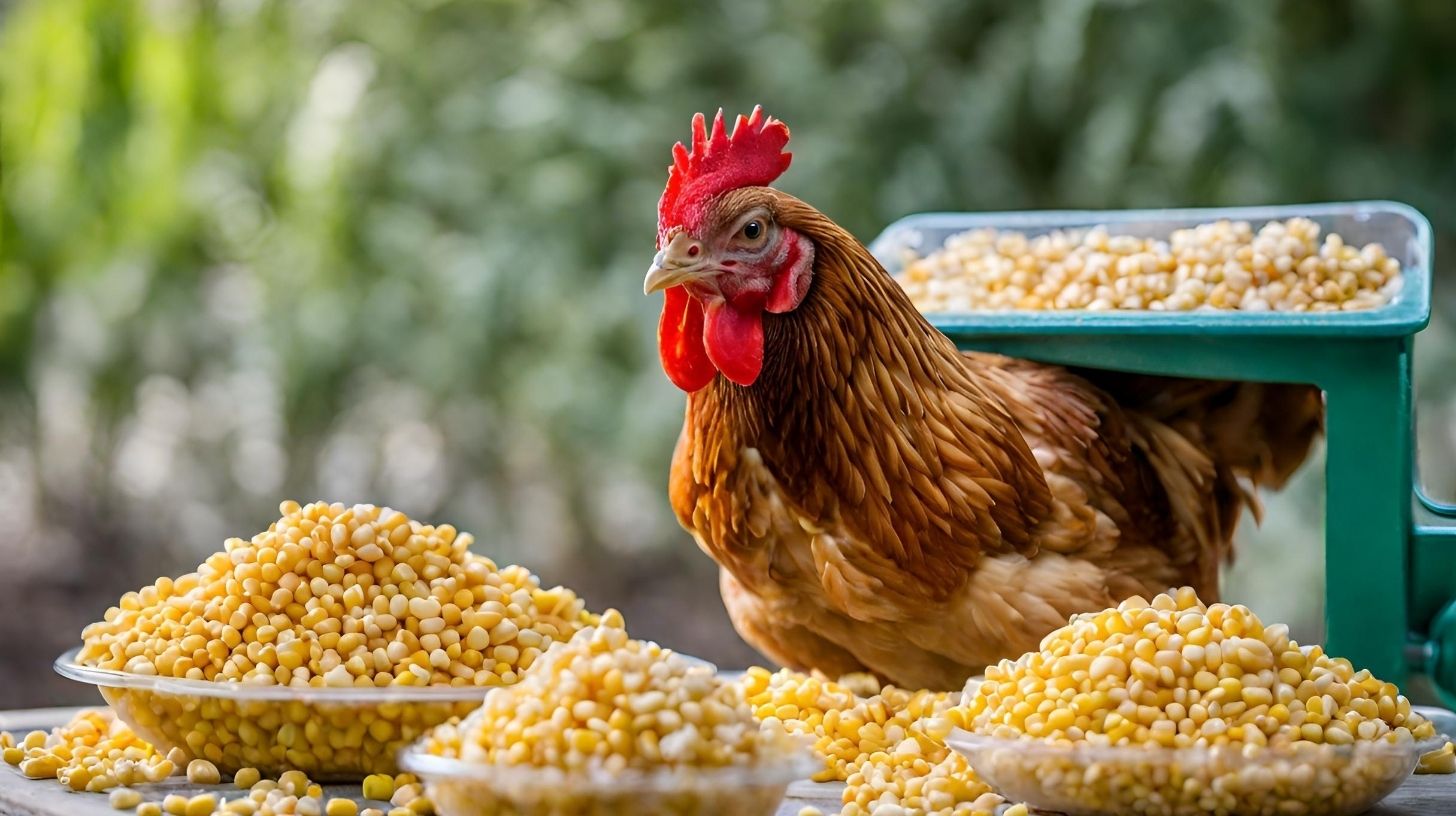Can Chickens Eat Pumpkin Leaves? Discover the Answer Here!

Table of content:
- Are Pumpkin Leaves Safe For Chickens?
- What Do Pumpkin Leaves Do For Chickens?
- Do Chickens Like Pumpkin Leaves?
- How Much Pumpkin Leaves Can Chickens Eat?
- Should I Feed My Chickens Pumpkin Leaves?
- What Are The Benefits Of Feeding Chickens Pumpkin Leaves?
- Will Pumpkin Leaves Hurt Chickens?
- How Often Can I Feed Pumpkin Leaves To Chickens?
- Is It Good To Give Chickens Fresh Pumpkin Leaves?
- Final Thoughts
Chickens can safely eat pumpkin leaves in moderation as part of a balanced diet. Pumpkin leaves offer hens a source of many important vitamins, minerals, and antioxidants. Feeding chickens pumpkin leaves provides a natural, nutritious treat or supplement.
Are Pumpkin Leaves Safe For Chickens?
Yes, pumpkin leaves are safe for chickens to eat. All parts of pumpkins and squash are non-toxic for chickens. Both the leaves and vines contain beneficial nutrients and can be fed to chickens fresh or dried.
However, chicken owners should introduce pumpkin leaves slowly at first to check for any individual allergies or intolerances. Monitor the hen’s droppings after eating pumpkin leaves looking for any diarrhea or abnormal stools. Loss of appetite or lethargy after eating the leaves can also indicate an allergy.
What Do Pumpkin Leaves Do For Chickens?
Pumpkin leaves provide chickens with a range of vitamins, minerals, and antioxidants beneficial for their health and productivity.
Some key nutrients found in pumpkin leaves include:
- Vitamin A – supports immune health and reproductive health. Important for egg production.
- Vitamin C – boosts immunity and collagen formation. Aids absorption of iron.
- Vitamin K – needed for blood clotting and bone health.
- Potassium – supports nerve signaling and muscle function.
- Lutein and Zeaxanthin – antioxidants that maintain eye health.
- Beta-carotene – an antioxidant that converts to vitamin A as needed. Has antioxidant and anti-inflammatory benefits.
- Folate – aids growth and supports neurological function.
- Iron – Needed to produce red blood cells and carry oxygen. Supports egg production.
- Magnesium – involved in over 300 enzyme reactions in the body. Supports metabolism, circulation, immunity, and reproductive health.
- Fiber – aids digestion and gut health.
The nutrients in pumpkin leaves can contribute to healthier chickens with strong immune systems, fewer instances of molting, quality egg production, and brighter plumage. The fiber aids digestion while the antioxidants reduce inflammation.
Do Chickens Like Pumpkin Leaves?
Most chickens enjoy eating pumpkin leaves, relishing the different flavors and textures. Hens will enthusiastically peck at fresh whole pumpkin leaves or chopped pieces.
Chickens that free-range or have access to the garden may even nibble on growing pumpkin vines and leaves naturally. Consider hanging a whole pumpkin leaf inside the coop or run for bored chickens to peck at.
To encourage reluctant chickens to try pumpkin leaves, hang leaves within easy reach, mix small pieces into their feed, or chop leaves finely. Offer dried crispy pumpkin leaf pieces as a crunchy treat. Over time, the hens will develop a taste for the pumpkin foliage.
How Much Pumpkin Leaves Can Chickens Eat?
Chickens can eat pumpkin leaves in moderation as part of a balanced diet. About 1-2 ounces of fresh pumpkin leaves, or 1-2 tablespoons of dried leaf pieces per hen daily is a good amount.
Larger quantities may cause loose droppings. Overfeeding the leaves could lead to an imbalance of nutrients, for example too much vitamin A. Ration pumpkin leaves as occasional treats, not everyday.
Growing chickens, molting hens, and active egg-laying chickens have higher nutritional needs that pumpkin leaves can supplement. But restrict feed amounts to prevent overconsumption.
Should I Feed My Chickens Pumpkin Leaves?
Pumpkin leaves make a nutritious supplement to a chicken’s diet. The leaves provide vitamins, minerals, antioxidants, and fiber absent in commercial feed rations.
The natural bioactive compounds benefit chicken health and quality of life. Chickens able to free-range usually nibble on greens, weeds, vines, and garden plants. Pumpkin leaves satisfy this natural desire to forage.
Dried crushed pumpkin leaves can substitute for mineral supplements. Chopped fresh leaves offer moisture and interactive feeding. Consider feeding pumpkin leaves 2-3 times a week for optimal nutrition.
Monitor chicken droppings after consuming the leaves. Increase or decrease amounts based on the hen’s reaction and manure consistency. Caution feeding wet, fermented leaves as they can grow harmful molds.
What Are The Benefits Of Feeding Chickens Pumpkin Leaves?
Feeding chicken’s pumpkin leaves provides many possible benefits:
- Healthier chickens – Pumpkin leaves supply key vitamins, minerals, and antioxidants to support whole-body health. Nutrients like vitamin A, K, beta-carotene, lutein, folate, and magnesium maintain proper organ function.
- Increased immunity – The antioxidants and vitamin C in pumpkin leaves help chickens fight disease. Nutrients like vitamin A, beta-carotene, and zinc increase resistance.
- Reduced molting – Quality protein and minerals in the leaves can reduce excessive feather loss. The pigments support feather regrowth and color.
- Egg quality – Lutein, vitamin A, folate, and vitamin B provide nutrients critical for egg production. The antioxidants may help preserve freshness.
- Gut health – Fiber aids digestion while magnesium relieves constipation. Vitamin K synthesizes mucins that protect gut lining integrity.
- Foraging enrichment – Chickens display natural foraging behaviors pecking at whole or chopped pumpkin leaves. This enrichment reduces stress and aggression.
Will Pumpkin Leaves Hurt Chickens?
Pumpkin leaves are not toxic or hazardous to chickens in moderation. However, improper feeding of the leaves can cause some adverse effects:
- Allergic reaction – Some sensitive chickens may have an undiagnosed allergy or intolerance to compounds in pumpkin leaves. Monitor chick’s initially for any adverse reactions.
- Loose droppings – Too much pumpkin foliage can irritate the digestive tract causing wet, unformed stools. Stop feeding leaves until droppings normalize.
- Nutrient imbalance – Overdoing high vitamin A foods like pumpkin leaves may create a toxicity or deplete other nutrients like vitamins D or E.
- Moldy leaves – Wet, fermented pumpkin leaves may grow hazardous molds. Only feed fresh, dry leaves. Discard any slimy leaves or vines.
- Impacted crop – Feeding large, whole leaves may cause swallowing difficulties or crop impactions. Shred or chop leaves into small pieces before feeding.
When introducing pumpkin leaves, go slowly and watch for any individual chicken sensitivities. Adjust amounts or frequency based on reactions. Overall, pumpkin leaves offer a safe, nutritious supplement for most backyard chickens.
How Often Can I Feed Pumpkin Leaves To Chickens?
Chicken owners can safely feed pumpkin leaves to their flock 2-3 times per week. For variety, offer leaves on different days than other treats.
Monitor the hen’s manure after eating the leaves. Loose green droppings indicate overfeeding. Increase frequency gradually, from once a week up to every other day for hens that tolerate the foliage well.
Active layers, growing chickens, and molting birds have higher nutritional needs that occasional pumpkin leaves can supplement. Broody hens, elderly chickens, or chickens prone to diarrhea may better tolerate smaller, less frequent portions of pumpkin leaves.
Some chicken keepers dry and powder bulk pumpkin leaves for storage as a mineral supplement, then sprinkle over feed daily. This avoids waste while ensuring a balanced intake.
Consider the season as well. In spring, young plants offer more tender leaves and fewer strings. Mature fall vines may have tough textures requiring chopping. Adjust the amounts, frequency, and form of pumpkin leaves based on the individual hen.
Is It Good To Give Chickens Fresh Pumpkin Leaves?
Yes, chickens benefit nutritionally from fresh pumpkin foliage. The leaves of this vegetable provide:
- Higher moisture content – important for hydration
- Crunchy, juicy texture – encourages pecking and chewing
- Bright green colors – stimulate vision and interest
- Mild flavor – more palatable than bitter greens
- Whole nutrients and fiber – not degraded from drying process
Some recommendations for feeding fresh pumpkin leaves:
- Pick young, tender leaves or chop mature leaves into small bites
- Rinse and pat leaves dry before feeding
- Hang leaves inside coops or runs for fun foraging
- Mix bits of fresh leaves into feed or serve on top
- Refrigerate uneaten fresh leaves promptly, discard any slimy pieces
- Adjust amounts based on manure consistency
While fresh is ideal, dried pumpkin leaf pieces can be reconstituted in water to partially restore moisture, texture, and nutrients as well. Feed chickens fresh pumpkin leaves in moderation for optimal nutrition and enjoyment.
Final Thoughts
Pumpkin leaves provide chickens with many vitamins, antioxidants, and minerals absent from standard feed that contribute to overall flock health and egg quality. Chicken owners should introduce pumpkin leaves slowly, monitoring for adverse reactions, and feed leaves moderately as part of a balanced diet. When fed properly, most hens eagerly consume fresh, whole pumpkin leaves as a nutritious treat. Dried or powdered pumpkin leaf supplements can also safely support chicken health and nutrition.
Welcome. I’m Adreena Shanum, the proud owner of this website, and I am incredibly passionate about animals, especially poultry. I founded adreenapets.com as a labor of love, stemming from my desire to share my knowledge and experiences with poultry enthusiasts worldwide.




